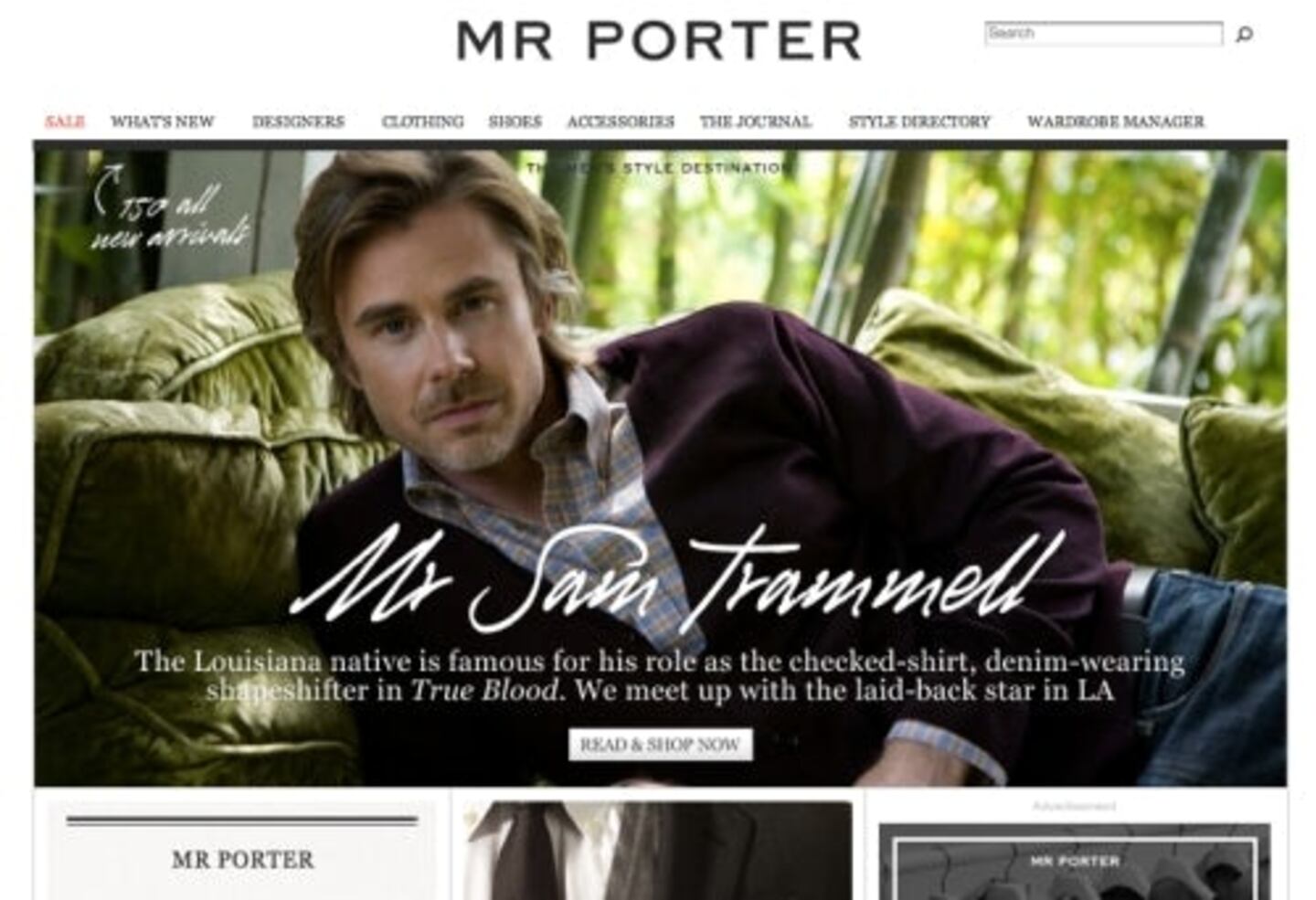
The Business of Fashion
Agenda-setting intelligence, analysis and advice for the global fashion community.

Agenda-setting intelligence, analysis and advice for the global fashion community.

NEW YORK, United States — What began as a trickle is now starting to look more like a mass exodus. Jeremy Langmead, formerly of Esquire, is now at Mr. Porter. Andrea Linett, formerly of Lucky magazine, is now at eBay. Dennis Freedman, formerly of W, is now at Barneys. Fiona McIntosh, formerly of Grazia, is now at My Wardrobe. And the list goes on. It seems that there are almost weekly reports announcing that yet another magazine veteran has fled a traditional publishing company to take up a position at a brand or retailer. Recently, it was British Vogue that was in the headlines, when creative director Robin Derrick and fashion director Kate Phelan both announced within days of each other that they were leaving the magazine. Phelan is set to become creative director of Topshop, while Derrick's plans have yet to be revealed.
By now, it's a well-known fact that times are tough for traditional, ad-supported editorial outlets. For example, from 2007 through 2009, Condé Nast — publisher of Vogue, Vanity Fair and others — saw about $500 million in revenue disappear, a decline from which it has yet to recover. In fact, Condé Nast CEO Chuck Townshend recently admitted to the Wall Street Journal, "My eyes are wide open. I don't consider [the traditional ad-revenue model] to be a perennially sustainable stream of revenue."
While the Great Recession cut traditional advertising spending dramatically, the internet has also given brands and retailers a cost-effective Clway to circumvent publishers and engage consumers directly with their own editorial content. Back in January, David Carr nailed the implications of this trend in a piece entitled "Publishing, Without Publishers."
But while there’s been a great deal of discussion about the death of old business models, and the emergence of new ones, there has been relatively little said about the impact of this evolution on the actual content itself. In what ways — positively or negatively — will the rise of content created by brands and retailers transform what we call editorial?
ADVERTISEMENT
Perhaps no fashion business is better known for integrating editorial and retail than Net-a-Porter. "Merging magazine reading and shopping creates the ultimate playground for fashion lovers — an entirely shopable magazine," said Claudia Plant, Net-a-Porter's editorial director, who left Tatler ten years ago, becoming one of the first members of Natalie Massenet's team, pioneering this new editorial model.
But where previous editorial models relied on content to attract readers who might then feel an affinity for the brands being advertised, this new model puts commerce at the centre, with editorial content working to reinforce consumer engagement and make the website more “sticky.” In other words, it’s less about consumers coming to these sites for the content and then deciding to shop, and more about people coming to shop and lingering to explore some content, which helps to drive sales.
“The retail aspect serves as the foundation and lays the groundwork in conceptualising the editorial content on the site,” said Jeremy Langmead, editor-in-chief of Net-a-Porter’s menswear site Mr. Porter. “It’s very much editorial being harnessed to drive retail,” agreed Fiona MacIntosh, consultant creative director at My Wardrobe. “We are starting to track reader’s responses to our editorial. If a certain story didn’t generate more sales, then we’ll bin that and find a new way of engaging the consumer.”
But should sales be the only barometer of editorial success? What about the amount of time spent with a piece of content, the number of social media shares it gets, or the seemingly old-fashioned concepts of providing value to the reader or furthering an editorial point of view? And what about editorial independence and integrity?
Despite the fact that traditional publishing companies have ‘church and state’ policies that officially separate advertising and editorial, it’s a barely-kept secret that editors at major magazines routinely engage in behind the scenes favour-trading, ensuring editorial placement for their advertisers.
But at least in principle, maintaining editorial independence and integrity is more than ethically important. It's also a practical selling tool. That's because, for readers, an important part of a traditional magazine's appeal is the promise of honest, uncompromised opinions. For marketers, the appeal of advertising with these publications is, ironically, somewhat the same: the opportunity to be affiliated with the opinions of an editorial outlet without, ultimately, being responsible for those opinions. If the editorial ever wanders into uncomfortable territory (for example, the December 2010 issue of French Vogue, which featured heavily made-up children in luxury womenswear) the advertiser can disown the media outlet and walk away relatively untouched.
For this new breed of retail sites, where content is built around commerce, establishing an independent editorial identity, without impinging on the brands that drive a significant portion of the revenues that ultimately pay the bills, is a significant challenge. It’s a conflict that’s familiar to veterans of traditional ad-supported editorial, with one important distinction: at the end of the day, an advertiser is far more passive than a retail partner. This makes the balancing act of driving the bottom line while creating the kind of independent editorial content that consumers want to spend time with (and not just thinly-veiled advertorials) all the more difficult.
Alongside retailers, a number of brands are also creating and publishing their own editorial-style content. In a much-cited quote, Joanna Shields, EMEA Vice President at Facebook, pointed to British luxury brand Burberry as leading this trend. "Burberry is producing its own original content," she said. "Burberry is no longer just a fashion company — today they are a thriving media enterprise."
ADVERTISEMENT
But for brands, the challenge of creating their own content is both simpler and more intractable, as there is even less opportunity to credibly negotiate an independent space between seller and consumer. Nevertheless, the approach comes with clear advantages: the message being delivered is their message, without mediation. But for this very same reason, branded content also comes with limitations and risks. In addition to offering plausible deniability if the message goes off track, traditional editorial outlets perform the function of interpreting and translating brands for their specific readerships. When Love magazine, for example, includes Louis Vuitton in a piece of fashion editorial, the result is quite different to the way a Vogue story might communicate the same brand. But when brands become media outlets themselves, though they may vary their approach to suit specific geographies and media channels, the results are more uniform. And if brands take a misstep, it's much harder to backtrack or disown the message.
Emerging brands such as Acne have had great success creating their own smart, opinionated editorial content with Acne Paper. But most brands prefer to partner with agencies like Vice Media Group's Virtue Worldwide or Condé Nast's newly launched Ideactive, for two main reasons: despite the brain drain going on at publishers, brands often lack the full range of skill sets they need to create their own content and because they still prefer to establish a buffer between themselves and any opinions put forth in the content they publish. Still, when compared to the aggressive sloganeering of traditional advertising campaigns, the timidity of most brand content is notable.
This timidity has lead most brands to maintain a clear division between their brand content and their core messaging. But American denim giant Levi’s is proving to be an exception to this rule. In recent campaigns, the brand has experimented with transforming its advertising into something that feels closer to editorial content, with opinionated spots shot by art house directors such as M Blash and Cary Fukunaga. “[Our advertising] has got a point of view, that’s for sure," said Joshua Katz, senior manager of global engagement marketing for Levi’s.
Over the last year, the brand has also turned itself into a platform for content creation, establishing a series of content-rich creative workshops in New York, San Francisco and Los Angeles and commissioning original content like Outside In, a documentary film by director Alex Stapleton. "The workshop project started with the idea that, instead of just talking about the people we admired, we could create a platform to actually work with them. What is different about our project is that we're not dictating what happens. We have to have a certain amount of trust and let these things live and be what they should be," said Katz.
"Editorial content, in all its forms, is an engaging and effective way of articulating who you are and what you stand for to users who are increasingly interested in the narratives surrounding a brand," said Horacio Silva, who recently departed his position as online director of New York Times style magazine T to join brand marketing and entertainment agency All Day Every Day as director of content.
But despite the risks, for both brands who create their own editorial and retailers who editorialise their inventory, it’s worth remembering that content only establishes affinity if it expresses a clear and confident point of view. In the end, that continues to be what separates bland content from intriguing editorial. As Langmead says, “The editorial content provides us with a voice.”
The trick is making sure you have something to say.
Ken Miller is creative director at All Day Every Day and the editor of three books, SHOOT, Revisionaries and a forthcoming fashion volume for Rizzoli International.

From analysis of the global fashion and beauty industries to career and personal advice, BoF’s founder and CEO, Imran Amed, will be answering your questions on Sunday, February 18, 2024 during London Fashion Week.
The State of Fashion 2024 breaks down the 10 themes that will define the industry in the year ahead.
Imran Amed reviews the most important fashion stories of the year and shares his predictions on what this means for the industry in 2024.
After three days of inspiring talks, guests closed out BoF’s gathering for big thinkers with a black tie gala followed by an intimate performance from Rita Ora — guest starring Billy Porter.